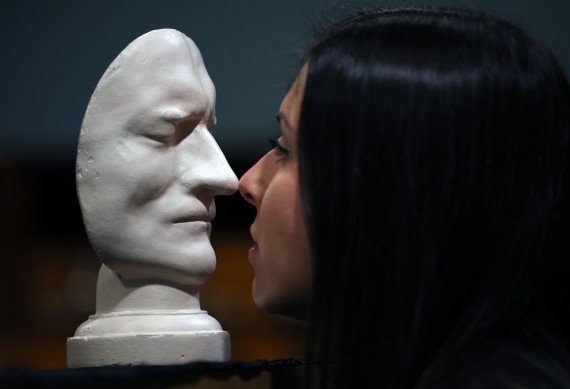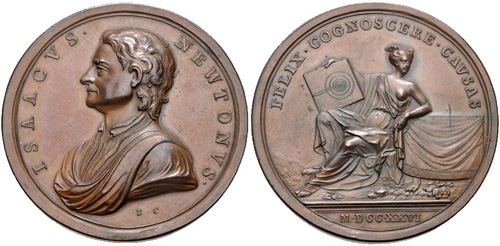A Previously Unrecorded Wax Relief of Isaac Newton
by James Gossett (fl. 1736 - 63).
James Gossett is recorded as working as a modeller in wax and picture framer in Berwick Street, Soho.
In The Universal Director, or the Nobleman's and Gentleman' True Guide to the Masters and Professors of the Liberal and Polite Arts by Thomas Mortimer, 1763.
Private Collection.
_________________________
Wax Portrait Relief of Isaac Newton by Matthew Gosset (1683 - 1744).
10.5 x 8.5 cms
It is recorded in the minutes of the Spalding Gentleman's Society that in 1729 George Johnson of Durham School presented to the Society's Museum 'a curious effigy of the Hon. Sir Isaac Newton ... made in profile in the manner of a medaglion by the ingenious Mr Gosset'.
The Spalding Gentleman's Society of Spalding in Lincolnshire was established
by Maurice Johnson of Ayscough Hall, (1688 - 1755) in 1710 and incorporated as 'a Society of Gentlemen, for the supporting of mutual benevolence, and their improvement in the liberal sciences and in polite learning', in 1712. With the death of Maurice Johnson in 1755 the Society became moribund but was revived in the mid 19th Century. It is still active today and has a Museum in Spalding.
For their website see - http://www.spalding-gentlemens-society.org/
For the Gentleman's Society at Spalding: Its Origin and Progress pub. 1851. see -
This work includes a list of members of the Society, amongst whom the lumineries were in no particular order Sir Isaac Newton himself, Dr William Stukeley the Antiquary, George Vertue the artist and engraver, Alexander Pope, John Gay the poet, Michael Rysbrack the Sculptor, Dr Richard Mead, Sir Hans Sloane, Samuel and Nathaniel Buck engravers, Martin Folkes, Theophilus Desaguliers, Charles Jennens of Gopsall Hall. Smart Lethuillier
Maurice Johnson - also established the Stamford Society, c.1721; he was barrister in the Inner Temple, 1710; hon. librarian of the Society of Antiquaries, 1717;

Miniature of Maurice Johnson by George Vertue
© National Portrait Gallery, London
For more on this portrait see -
For more on the Society see -
The Correspondence of the Spalding Gentleman's Society (1710 - 1761), by Diana Honeybone, Michael Honeybone. Pub Boydell Press, 2010.
_________________________________
An Anonymous Wax Relief, Half Length Portrait of Isaac Newton.
18.3 x 15 cms.
Another at the Victoria and Albert Museum.
'Nature and Natures Laws
Lay hid in night
God said, Let Newton be
And all was light'
Catalogued as late 18th Century?
Image Courtesy the Welcome Library.
_________________________
Another Anonymous Coloured Wax relief of Isaac Newton.
8.5 x 6 cms.
Milo Keynes notes (E. 17 c. see below) a wax relief of Newton with Mario Praz in Rome by Samuel Percy (1750 - 1820).
Stylistically this wax could be by Percy.
Image Courtesy the Welcome Library.
_______________________
Much information on the Portraits of Isaac Newton originally gleaned from
The Iconography of Sir Isaac Newton.
by Milo Keynes, pub. The Boydell Press in Association with Trinity College, Cambridge. 2005.












































